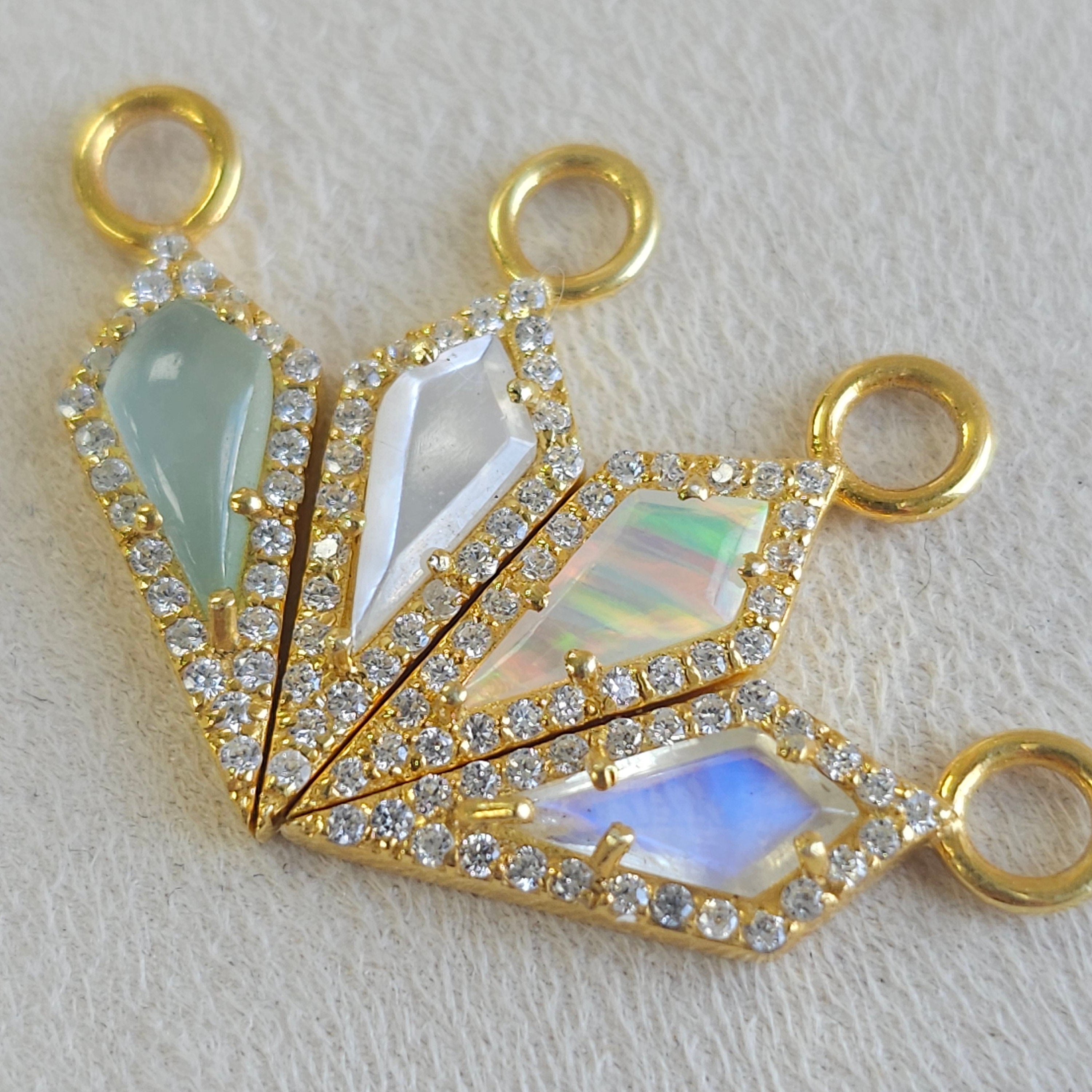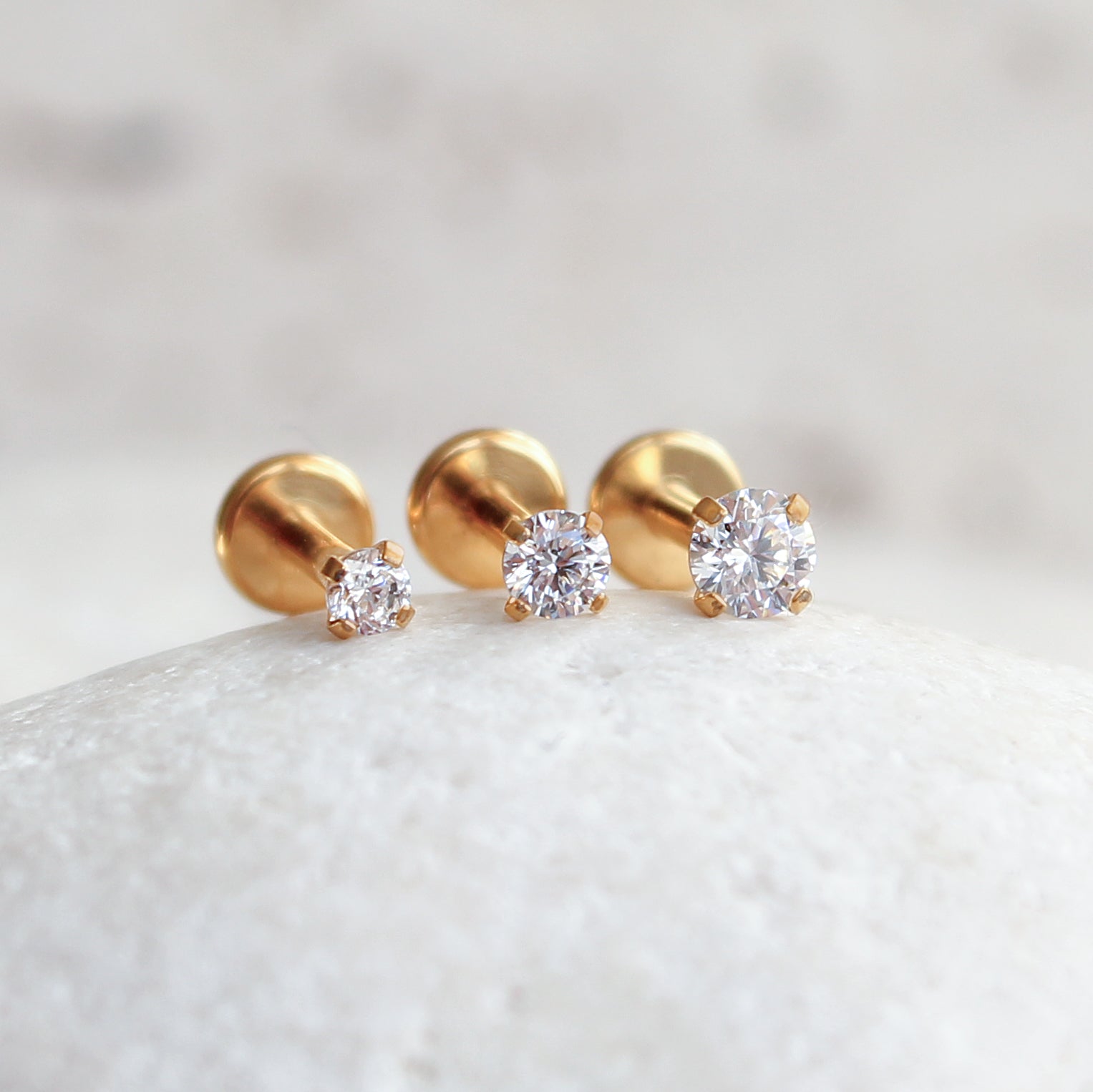EAR PIERCING GUIDE
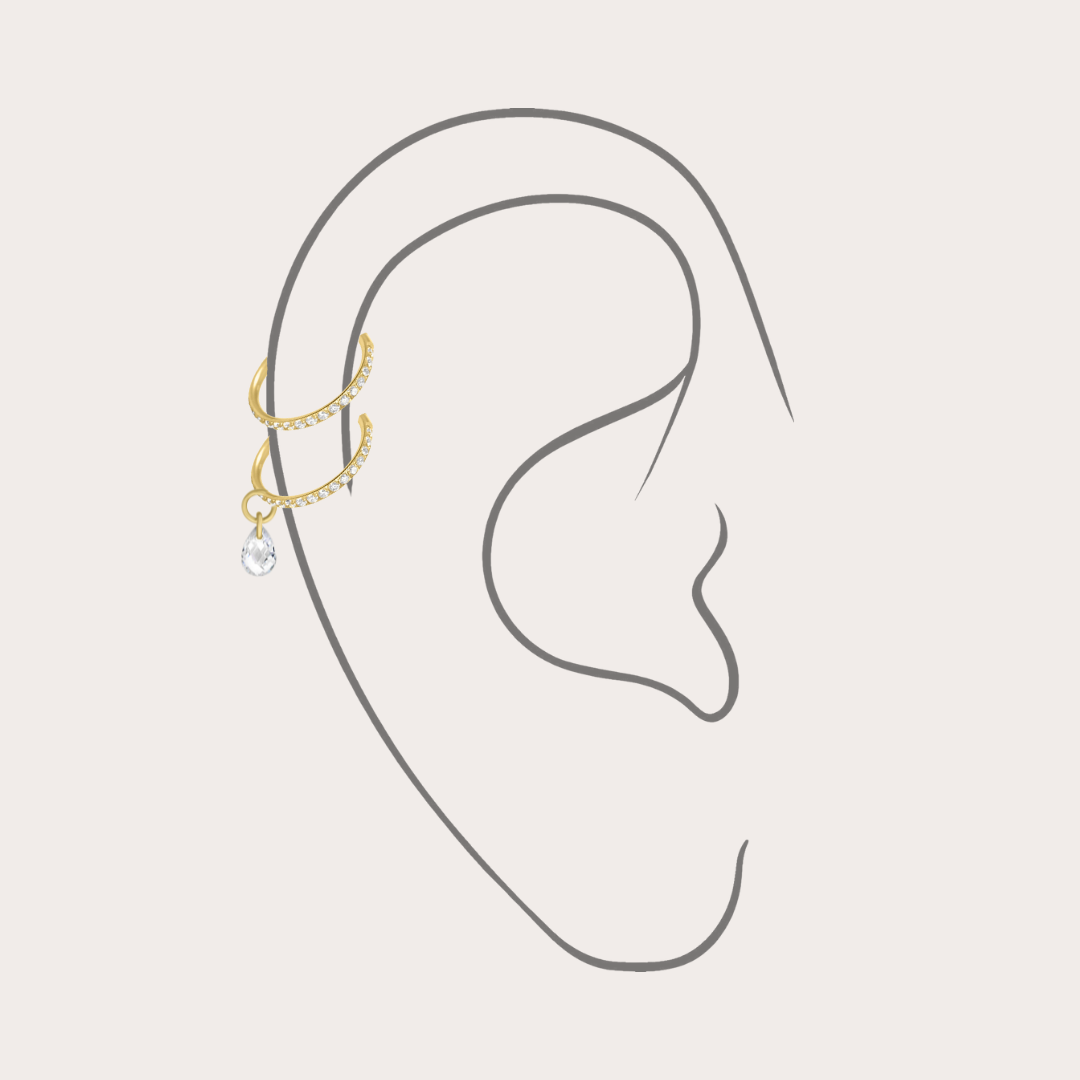
Helix
One of the most popular 'starter' piercings after lobes, a helix is located at the top of the ear in the cartilage with versatile options for jewellery.
Helix Piercing Guide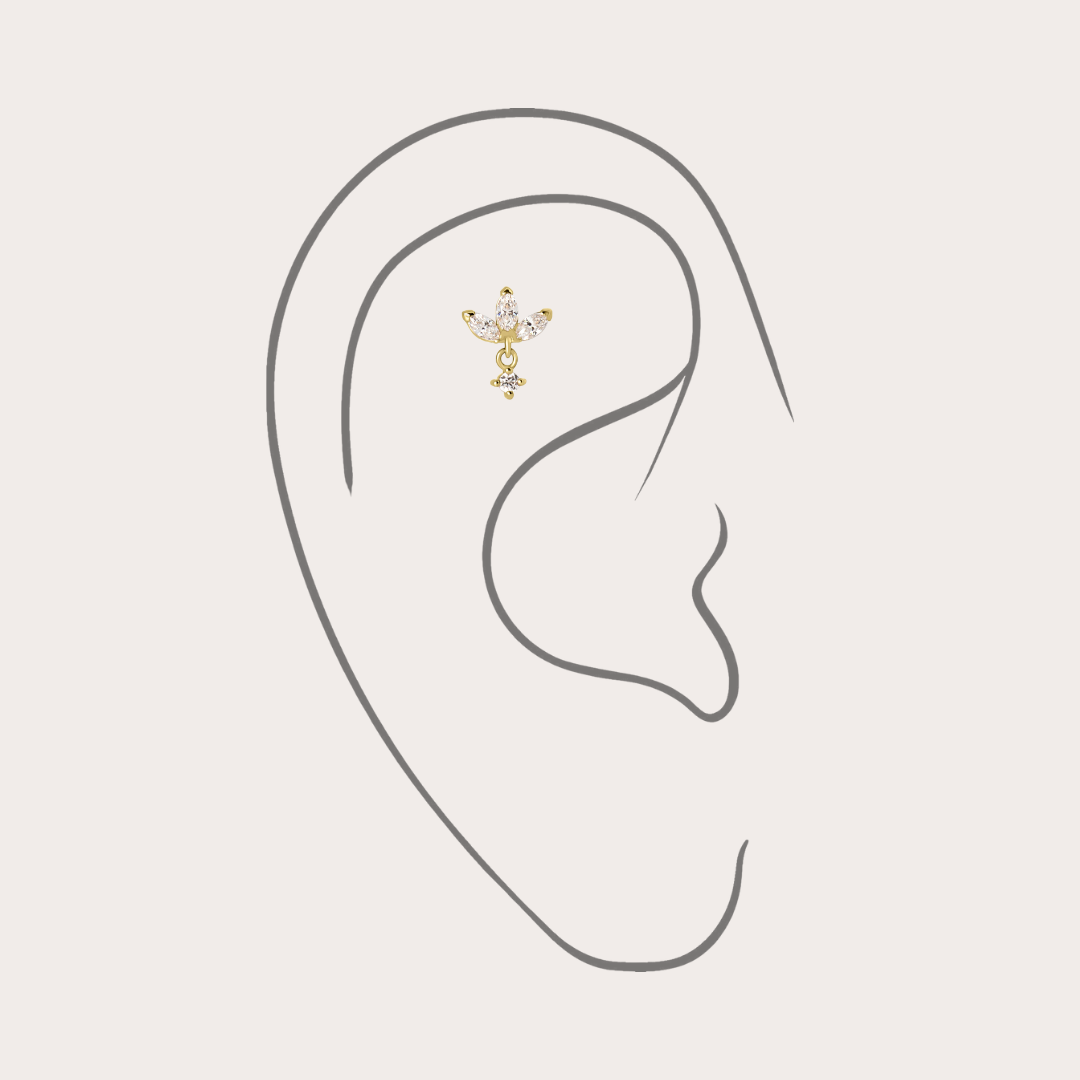
Flat Helix
A flat helix piercing is located on the flat part of the ear, it allows space to experiment with statement labrets including those with hanging dangles for an eye-catching ear look.
Flat Helix Piercing Guide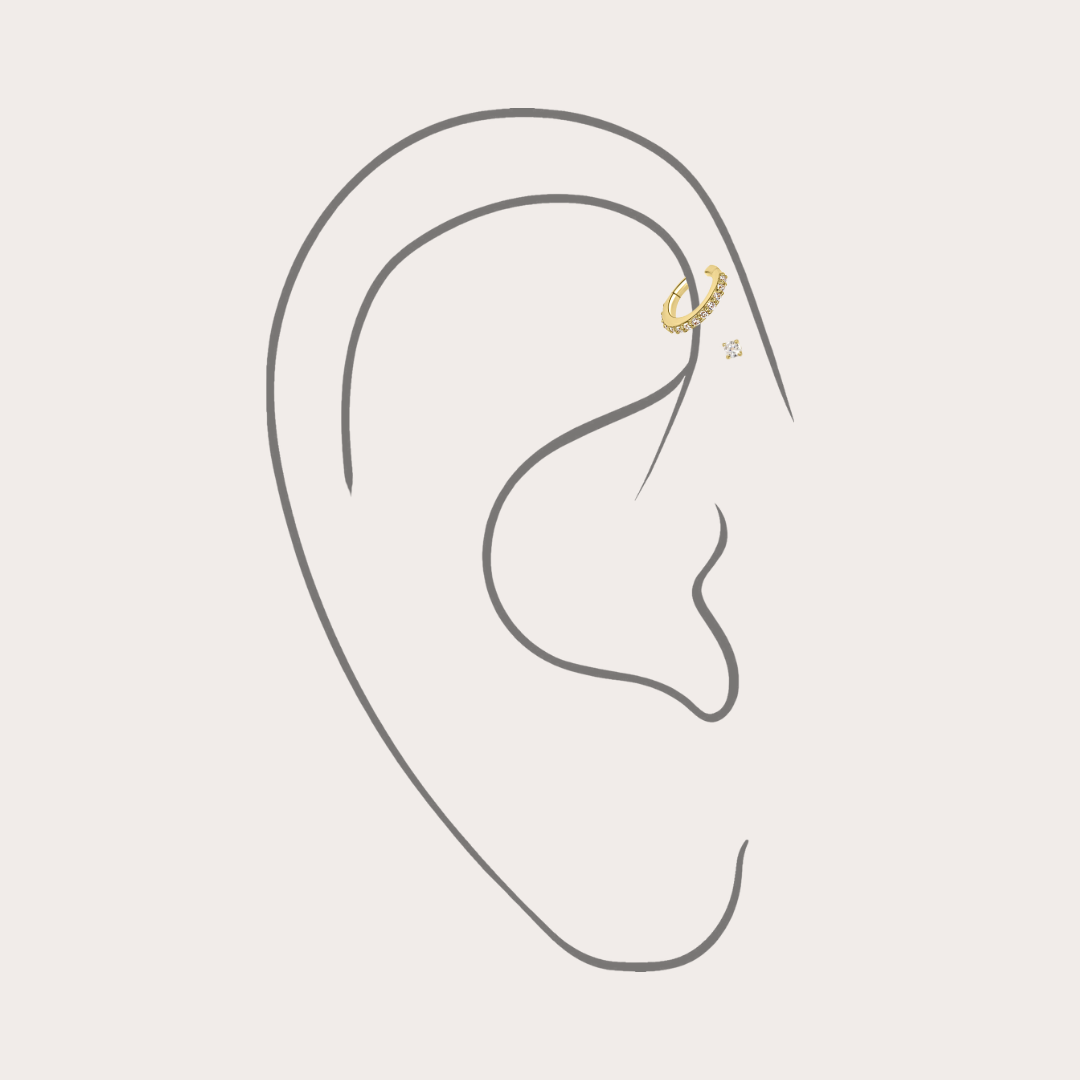
Forward Helix
The forward helix is a beautiful piercing location, making the most of the small piece of skin located just above the tragus. It's the perfect placement for dainty studs or a tiny hoop.
Forward Helix Piercing Guide
Vertical Helix
A vertical helix piercing has quickly gained popularity due to the unique placement for those with folded cartilage at the top of the ear.
Vertical Helix Piercing Guide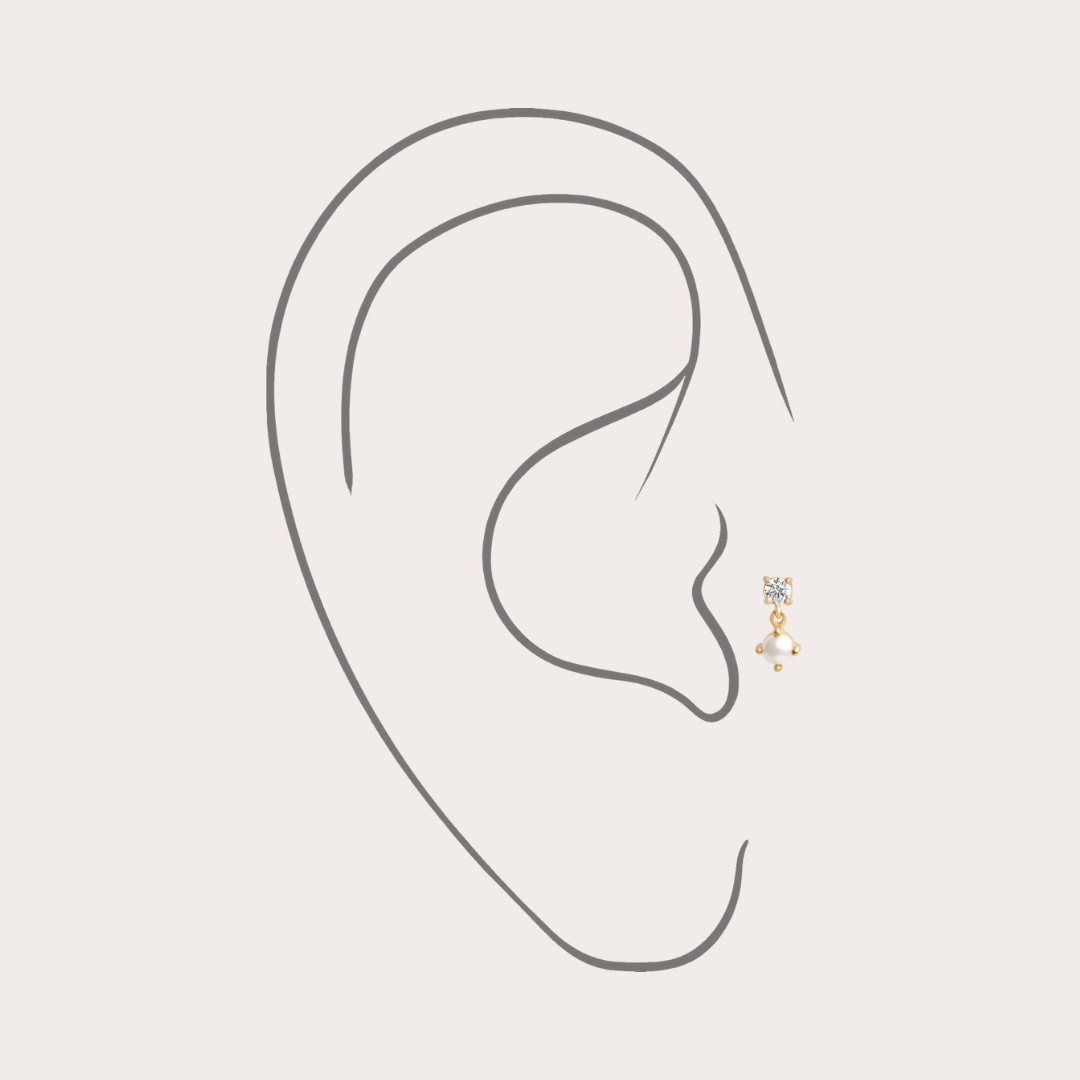
Tragus
The tragus is one of the most common piercing placements as the jewellery in this location can be easily shown off with beautiful statement labret or a dainty hoop.
Tragus Piercing Guide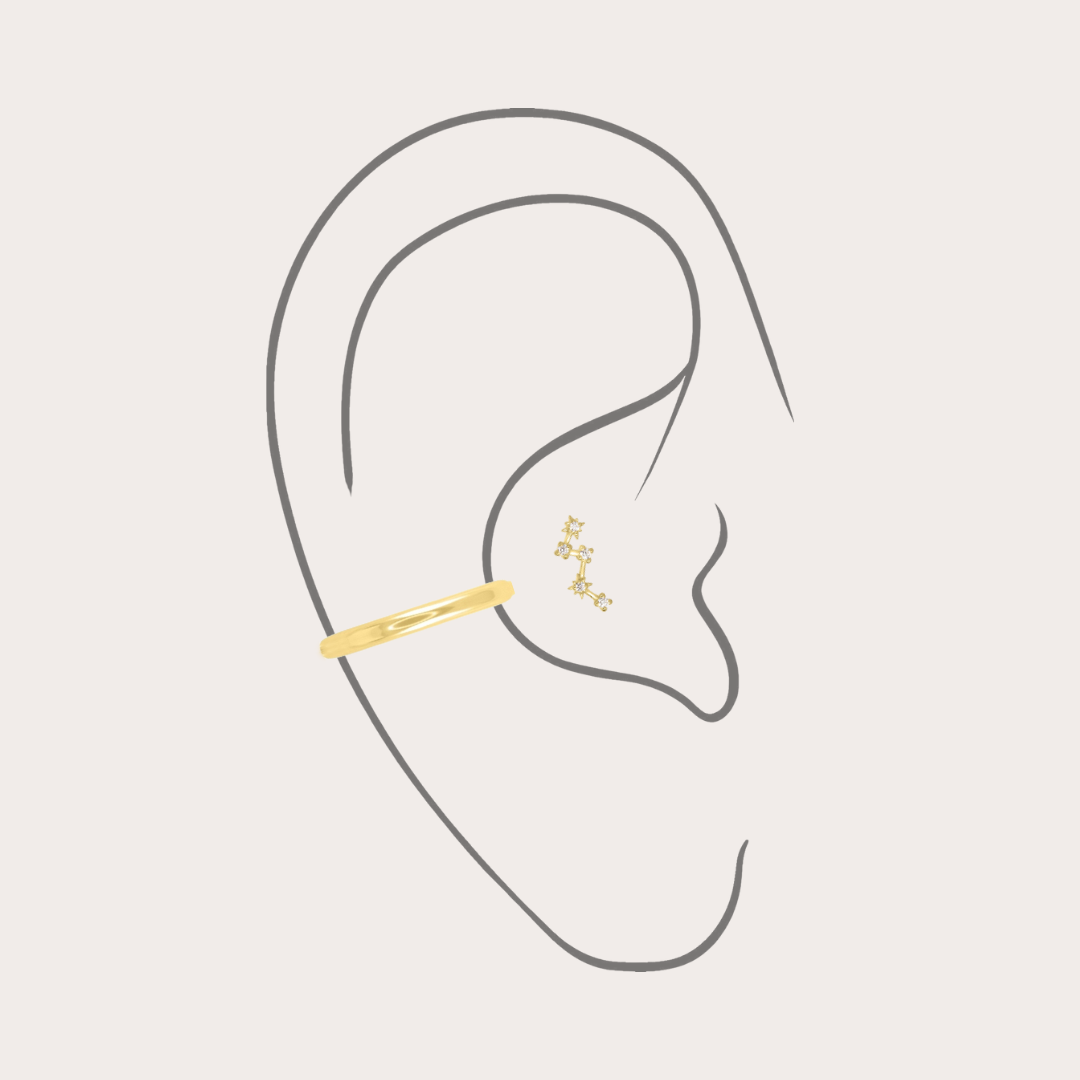
Conch
A conch piercing is a popular option for those wanting to wear a hoop that orbits around the center of their ear, or for nestling a touch of subtle sparkle inside with a labret.
Conch Piercing Guide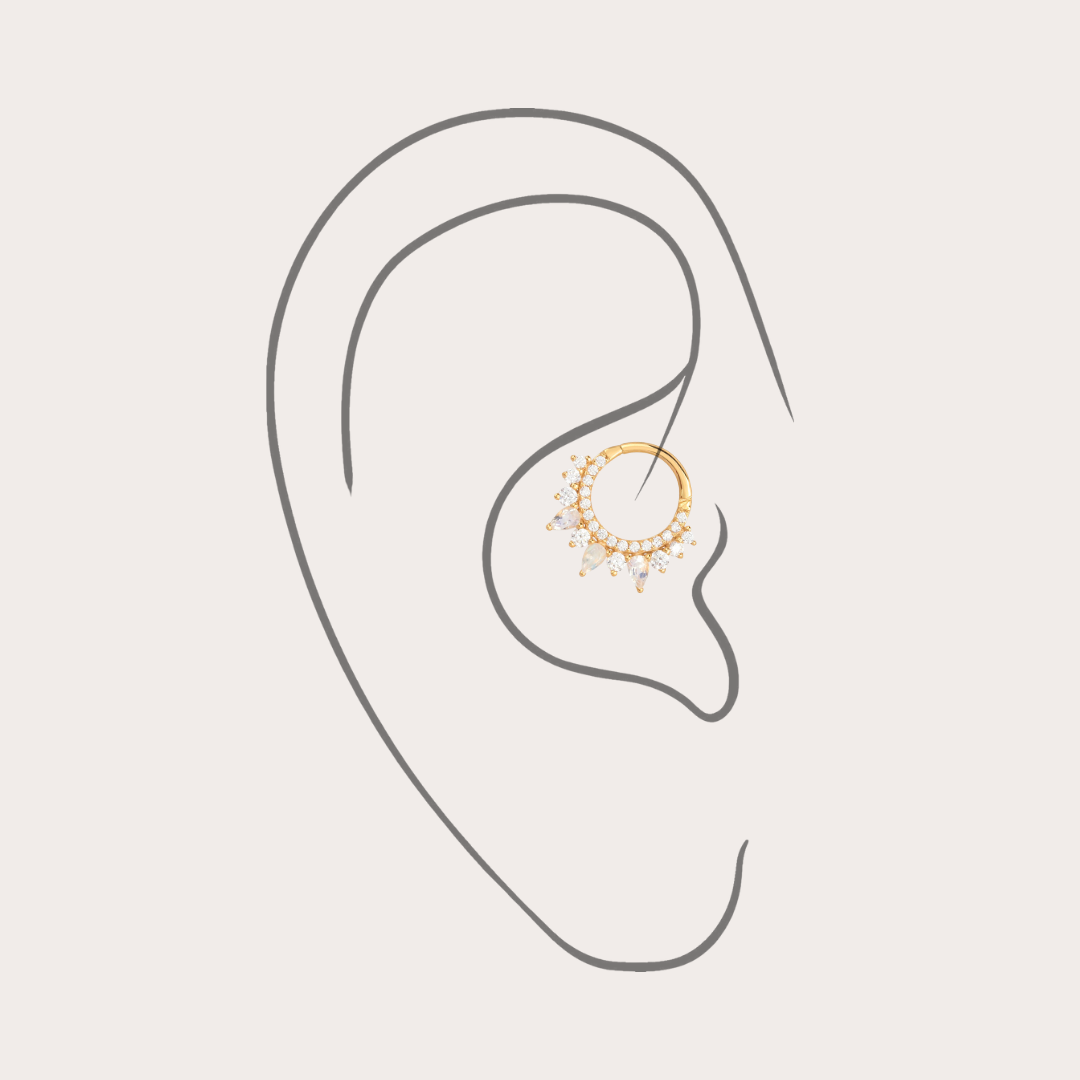
Daith
Daith piercings are one of our personal favourites at CHL due to the beautiful front-facing clickers that can be worn, making a big statement to any ear look.
Daith Piercing Guide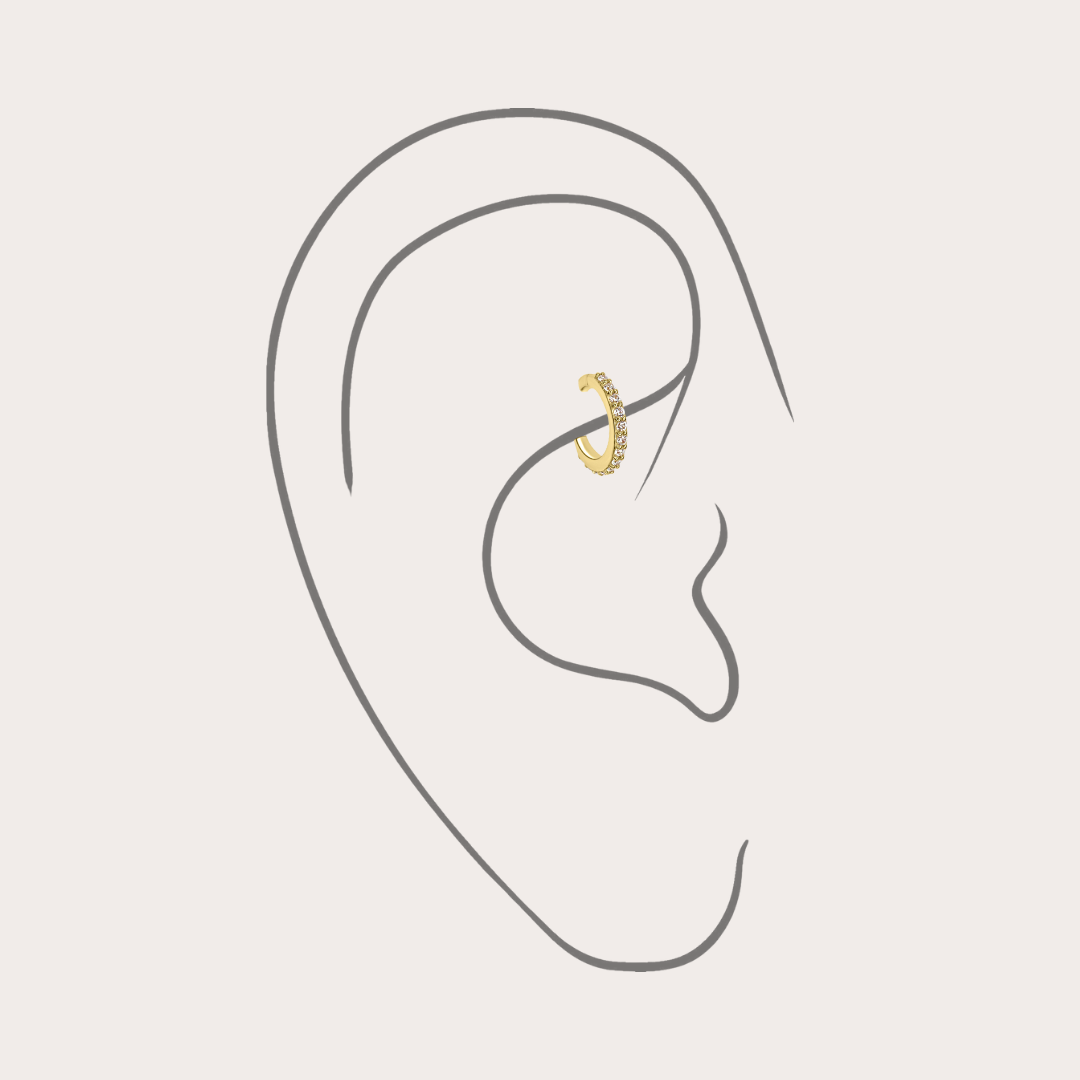
Rook
A rook piercing is located just below the flat part of the ear, in the ridge of cartilage that hangs below. This is an impressive and unique piercing to have!
Rook Piercing GuideULTIMATE PIERCING GUIDE
You're probably careful about what food you put into your body, but may not be as careful about the jewellery your body is exposed to. Not every material available on the market is suitable to be worn in the body, they may even contain skin-irritating metals that you're not aware of. The "base metal" that the jewellery is made of is the main factor to look into when searching for new jewellery, as this determines whether the jewellery can be worn short-term or long-term and more importantly, if it will cause your piercing any issues.
What are considered high quality metals?
ASTM F136 Titanium
An implant-grade, nickel-free, hypoallergenic and highly resistant metal. The best of the best when it comes to jewellery you want to leave in long-term, for extended periods of time without removing when showering or swimming for example. It is suitable for new and healed piercings and especially those who have sensitive skin or suffer from metal allergies.
316L Surgical Steel
Surgical Steel is probably the most popular body jewellery material available. It is high quality, affordable and extremely durable for long-term wear. The most body-friendly grades are 316L and 316LVM Surgical Steel. These both contain alloys, however they are kept inside the material through a special manufacturing process so they can not be released from the metal, meaning there's no need to worry about a reaction unless a severe allergy is present in the wearer.
Solid Gold
Gold is appropriate for brand-new initial piercings if it is 14K or higher, nickel-free, and alloyed for biocompatibility. Gold higher than 18K is too soft for body jewellery because it can easily be scratched, meaning dirt can become trapped inside and cause infection. Gold jewellery is a mixture of a percentage of Gold and the rest is made up of non-gold metal alloys. This means lower carat jewellery such as 9K consists of only 37.5% real gold, 45% silver and 17.5 % other alloy metals. This means you may experience a reaction if the carat weight isn't high enough for your individual requirements, however the way to counteract this is by wearing a combination of 9k Gold attachments and Titanium bars, to ensure the metal in your piercing for extended periods of time is hypoallergenic.
925 Sterling Silver
Sterling Silver is the perfect middle-ground material in-between what is used in fashion and fine jewellery. Reactions to 925 Sterling Silver is very rare because it typically consists of 92.5% pure silver and 7.5% copper. The exception is if the jewellery you purchased is not stamped "925" it may contain zinc instead of copper. Gold plated Sterling Silver or Vermeil is a thick layer of real Gold on top of 925 Sterling Silver.
What are considered low quality metals?
Brass
Brass is the most common base metal used in nearly all mass-produced costume jewellery - even by luxury brands. It is an affordable material because it is mixed with copper and zinc. The copper content often oxidises with moisture in the skin and causes the dreaded "green finger" resulting in worn-down plating rendering the jewellery unwearable, ending up in landfill and contributing to a throwaway culture. Brass usually contains nickel which means a high risk of allergy.
Alloys containing lead, cadmium, zinc or tin
Alloys are another popular metal used to make fashion jewellery because it is extremely cheap to produce and an easy material to work with. Alloys are a combination of other metals which include lead and nickel, which unfortunately means that it’s not ideal for person with skin sensitivities or allergies, furthermore lead is a known toxic metal.
Copper
Copper jewellery will oxidise (darken) and patina over time, meaning it can easily discolour skin when in constant contact with moisture. It is a naturally soft metal which makes it perfect for wire-wrapping gemstones or stamping/engraving.
The gauge, length or inner diameter are the three main specifications you will need to understand with body jewellery. It is notoriously complicated to those who aren't used to piercing sizes as gauges are also referred to in millimetres, so we'll explain all this terminology in an easy-to-understand way.
Gauge
The thickness of the earring post going through the piercing hole. The standard gauge for new cartilage piercings is 16 gauge.
16g = 1.2mm (Standard)
18g = 1.0mm (Thin)
20g = 0.8mm (Ultra Thin)
A traditional butterfly back stud earring is approximately 20 gauge which is significantly thinner than a 16 gauge earring.
Inner Diameter
This measurement is the width from the inside edge to inside edge for cartilage hoops, clickers or huggie hoops.
Within body jewellery, there are many different types or styles that are designed to be best suited to certain piercing placements. We'll explore each style and where it works best.
Labret
A labret aka "flat back" is a type of jewellery style which features a slim disc shape back. It is cleverly designed to sit completely flush to the skin, making it one of the most popular and sought after types of jewellery for most ear piercings.
As the flat disc is usually permanently attached to the end of the bar, this means the stem must be inserted from the back of the piercing, then the attachment is screwed into the front to secure it.
Best suited to the following piercings:
- Ear Cartilage (excluding rook, anti-tragus as these require a curved bar or hoop)
- Nostril
- Lip
Straight Barbell
A straight barbell has two attachments or "balls" at either end.
Best suited to the following piercings:
- Ear Cartilage (excluding rook, daith or anti-tragus as these require a curved bar or hoop)
- Tongue
- Nipple
Curved Barbell
A curved barbell has two attachments or "balls" at either end. This shape is designed to fit certain placements where anatomy requires a curved bar instead of a straight bar.
Best suited to the following piercings:
- Ear Cartilage
- Eyebrow
Clicker or seamless hoop
Clickers have become a very popular option for most ear piercings. They open and close with the hinged loop that simply *clicks* open and closed, making fitting and removing an extremely easy process. Clicker hoops are usually seamless, where the thickness is the same all the way around.
Best suited to the following piercings:
- Ear Cartilage
- Septum
- Nostril
- Lip
Captive Bead Ring
A captive bead ring is a circular hoop secured by a ball, held in place by the pressure of both sides of the hoop. In most cases, professional piercing tools are required to fit and remove a CBR because it must have just the right tension otherwise the ball will simply drop out.
Best suited to the following piercings:
- Ear Cartilage
- Eyebrow
- Septum
- Lip
Circular Barbell
A circular barbell is similar to a captive bead ring, except it is secured by two attachments or "balls" at either end of the hoop.
Best suited to the following piercings:
- Ear Cartilage
- Eyebrow
- Septum
- Lip

